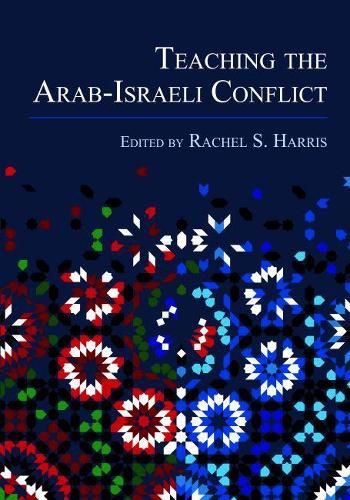Readings Newsletter
Become a Readings Member to make your shopping experience even easier.
Sign in or sign up for free!
You’re not far away from qualifying for FREE standard shipping within Australia
You’ve qualified for FREE standard shipping within Australia
The cart is loading…






This title is printed to order. This book may have been self-published. If so, we cannot guarantee the quality of the content. In the main most books will have gone through the editing process however some may not. We therefore suggest that you be aware of this before ordering this book. If in doubt check either the author or publisher’s details as we are unable to accept any returns unless they are faulty. Please contact us if you have any questions.
The Arab-Israeli conflict has become a touchstone of international politics and a flash point on college campuses. And yet, how do faculty teach such a contentious topic in class? Taught not only in international relations, peace and conflict resolution, politics and history, and Israel and Middle Eastern studies courses but also in literature, sociology, urban planning, law, cinema, fine art, and business-the subject guarantees wide interest among students. Faculty are challenged to deal with the subject’s complexity and the sensitive dynamics it creates. The result is anxiety as they approach the task and a need for guidance. Teaching the Arab-Israeli Conflict edited by Rachel S. Harris is the first book designed to meet this need. Teaching the Arab-Israeli Conflict brings together thirty-nine essays from experienced educators who reflect on the challenges of engaging students in college classrooms. Divided into seven sections, these personal essays cover a broad range of institutional and geographical settings, as well as a wide number of academic disciplines. Some of the topics include using graphic novels and memoirs to wrestle with the complexities of Israel/Palestine, the perils of misreading in the creative writing classroom as border crossing, teaching competing narratives through film, using food to teach the Arab-Israeli conflict, and teaching the subject in the community college classroom. Each essay includes suggestions for class activities, resources, and approaches to effective teaching. Whether planning a new course or searching for new teaching ideas, this collection is an indispensable compendium for anyone teaching the Arab-Israeli conflict.
$9.00 standard shipping within Australia
FREE standard shipping within Australia for orders over $100.00
Express & International shipping calculated at checkout
This title is printed to order. This book may have been self-published. If so, we cannot guarantee the quality of the content. In the main most books will have gone through the editing process however some may not. We therefore suggest that you be aware of this before ordering this book. If in doubt check either the author or publisher’s details as we are unable to accept any returns unless they are faulty. Please contact us if you have any questions.
The Arab-Israeli conflict has become a touchstone of international politics and a flash point on college campuses. And yet, how do faculty teach such a contentious topic in class? Taught not only in international relations, peace and conflict resolution, politics and history, and Israel and Middle Eastern studies courses but also in literature, sociology, urban planning, law, cinema, fine art, and business-the subject guarantees wide interest among students. Faculty are challenged to deal with the subject’s complexity and the sensitive dynamics it creates. The result is anxiety as they approach the task and a need for guidance. Teaching the Arab-Israeli Conflict edited by Rachel S. Harris is the first book designed to meet this need. Teaching the Arab-Israeli Conflict brings together thirty-nine essays from experienced educators who reflect on the challenges of engaging students in college classrooms. Divided into seven sections, these personal essays cover a broad range of institutional and geographical settings, as well as a wide number of academic disciplines. Some of the topics include using graphic novels and memoirs to wrestle with the complexities of Israel/Palestine, the perils of misreading in the creative writing classroom as border crossing, teaching competing narratives through film, using food to teach the Arab-Israeli conflict, and teaching the subject in the community college classroom. Each essay includes suggestions for class activities, resources, and approaches to effective teaching. Whether planning a new course or searching for new teaching ideas, this collection is an indispensable compendium for anyone teaching the Arab-Israeli conflict.